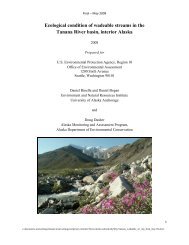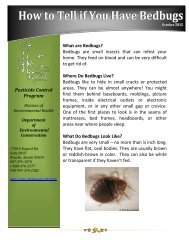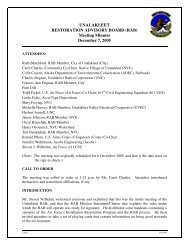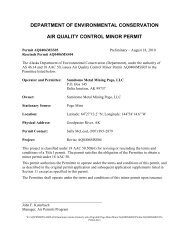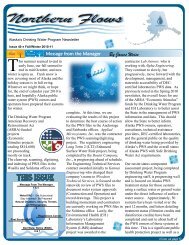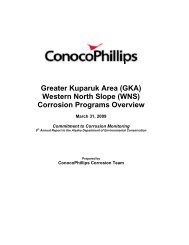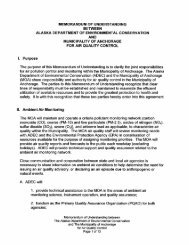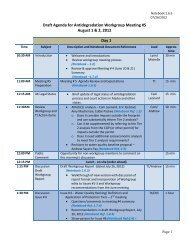2012 Ocean Ranger Guidebook Revision 3-7-12 - Alaska ...
2012 Ocean Ranger Guidebook Revision 3-7-12 - Alaska ...
2012 Ocean Ranger Guidebook Revision 3-7-12 - Alaska ...
You also want an ePaper? Increase the reach of your titles
YUMPU automatically turns print PDFs into web optimized ePapers that Google loves.
<strong>20<strong>12</strong></strong> <strong>Ocean</strong> <strong>Ranger</strong> <strong>Guidebook</strong> 3-7-<strong>12</strong><br />
appropriate training in the handling of hazardous materials. As guidance, the US Environmental<br />
Protection Agency (EPA) has issued a report that clarifies the fact that residuals, such as<br />
epinephrine, found in syringes after injections are not considered an acutely hazardous waste by<br />
definition and may be disposed of appropriately in sharps containers. Member lines have agreed<br />
that all Universal Precautions will be adhered to when handling sharps.<br />
Handling Method 1 Employed by Member Lines:<br />
Establish a reverse distribution system for returning unexpired, unopened non-narcotic<br />
pharmaceuticals to the original vendor.<br />
Handling Method 2 Employed by Member Lines:<br />
Appropriately destroy narcotic pharmaceuticals onboard ship in a manner that is witnessed and<br />
recorded.<br />
Handling Method 3 Employed by Member Lines:<br />
Land listed pharmaceuticals in accordance with local regulations. Listed pharmaceuticals are a<br />
hazardous waste having chemical compositions which prevent them from being incinerated or<br />
disposed of through the ship’s sewer system. Listing of such pharmaceuticals may vary from<br />
state to state.<br />
Handing Method 4 Employed by Member Lines:<br />
Dispose of other non-narcotic and non-listed pharmaceuticals through onboard incineration or<br />
landing ashore.<br />
G. Fluorescent and Mercury Vapor Lamp Bulbs: CLIA member lines have agreed to<br />
prevent the release of mercury into the environment from spent fluorescent and mercury<br />
vapor lamps by assuring proper recycling or by using other acceptable disposal methods.<br />
Fluorescent and Mercury Vapor lamps contain small amounts of mercury that could<br />
potentially be harmful to human health and the environment. To prevent human exposure and<br />
contamination of the environment, CLIA member lines have agreed that these lamps will be<br />
handled in an environmentally safe manner. Recycling of mercury from lamps and other mercury<br />
containing devices is the preferred handling method and is encouraged by various states. The<br />
recycling of fluorescent lamps and high intensity discharge (HID) lamps keeps potentially<br />
hazardous materials out of landfills, saves landfill space and reduces raw materials production<br />
needs.<br />
The recycling of fluorescent and HID lamps is a proven technology capable of reliably<br />
recovering greater than 99 percent of the mercury in the spent lights. At the recycling facility,<br />
this is done by using a crush-and-sieve method. In this process, the spent tubes are first crushed<br />
and then sieved to separate the large particles from the mercury containing phosphor powder.<br />
The phosphor powder is collected and processed under intense heat and negative pressure, a<br />
process called retorting. The mercury is volatized and then recovered by condensation. The glass<br />
particles are segregated and recycled into other products such as fiberglass. Aluminum<br />
components are also recycled separately.<br />
139






